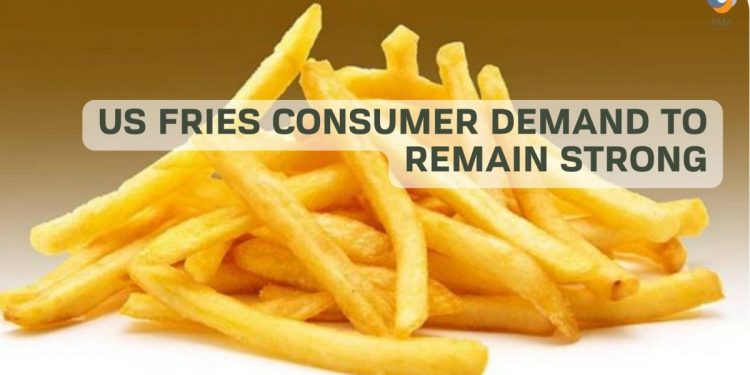Lamb Weston’s president and chief executive officer, Thomas P. Werner, recently declared that the company’s analysts expect restaurant traffic and consumer demand for French fries in the US to remain strong, although it may be more volatile in the near term as consumers face significant cost inflation.
“The fry attachment rate in the US, which is the rate at which consumers order fries when visiting a restaurant or other foodservice outlets, has been fairly consistent since the beginning of the pandemic and remains above pre-pandemic levels. Going forward, we expect restaurant traffic and consumer demand for fries in the US to remain strong. Although it may be more volatile in the near term as consumers face significant cost inflation,” Werner mentioned, cited by Food Business News.
He added that, in the US, overall fry demand, restaurant traffic in Lamb Weston’s third-quarter remained solid, although it weakened temporarily as the omicron variant spread quickly.
“Omicron’s impact peaked in January and affected consumer traffic at both quick-service and full-service restaurants. In addition, some restaurants closed temporarily or reduced operating hours due to staff shortages, which further impacted demand. Restaurant traffic, however, has rebounded to pre-micron levels, the company’s president and CEO said.
Werner added that recently, Lamb Weston informed food service and retail customers of another round of pricing that will take effect over the next six months.
For fiscal 2022, Lamb Weston is guiding that sales growth will be above its long-term target of low- to mid-single digits. But fourth-quarter sales volumes are expected to be tempered by production and logistics disruptions, inflation, and the impact of COVID-19 variants on restaurant traffic.
“Like others, we’re managing through freight challenges, including both cost increases and shipping delays. The freight challenges are impacting our top line as it limits our ability to service full demand. This is caused by a lack of containers for international and domestic shipments and truck driver shortages. This, combined with higher fuel cost, has also increased our cost to deliver products. We’re continuing to navigate through these and other operating challenges and remain on track to deliver our financial commitments for the year,” Lamb Weston’s CEO added.
Despite the challenges, Lamb Weston performed well during the third quarter ended February 27, 2022. Net income rose to USD107m, equal to USD0.73 per share on the common stock, from USD66m, equal to USD0.45 per share, the year before. Quarterly sales rose to USD955m from USD896m in the fiscal year 2021.








